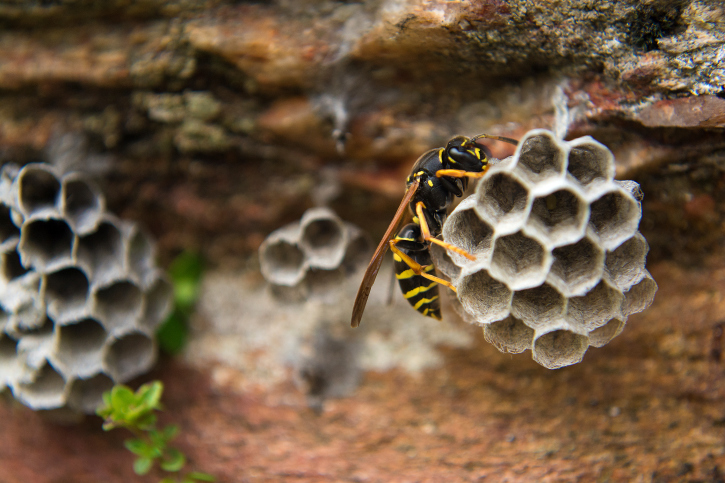Owings Mills — Are Umbrella Wasps Raining on your Parade?
Owings Mills is known for many things:
- A long history dating back to the early 1700s
- Being a landmark for nationally acclaimed corporate headquarters
- The home of Public Television’s Wall Street Week with Louis Rukeyser
With all this going for it, it’s no wonder that Owings Mills is such a popular place to live. But with all the development that has happened over the years, we’ve also seen a major uptick in the number of calls we get about umbrella wasps.

In areas like Owings Mills, where land has been cleared to build single-family homes, it leaves umbrella wasps and other insects with no place to go.
They tend to seek shelter and build their nests in barbecue grills, under patio furniture, in mail boxes, behind shutters, under deck rails or any other protected area around your home.
Although umbrella wasps are not aggressive and won’t attack unless provoked, our customers are often not aware that a nest is present and inadvertently disturb it when attempting to clean windows or do yard work, putting themselves and their families in danger of being stung.
Because of their smooth stingers, umbrella wasps can sting multiple times before dying, which is particularly bad news for someone who has mistakenly knocked a nest or people allergic to their stings.
All the Wasp-y Details
Umbrella wasps, also known as paper wasps, build nests out of “paper” that they make themselves using fibers collected from plants and wood (including your deck, shed or shutters).
Their nests resemble a hot air balloon or an umbrella, hence the name. Their nests house hundreds of hexagonal cells where the females lay eggs, but mature nests only hold 20-30 adults.
They are often found in trees out in the woods, but on land cleared of trees, they end up nesting in sheltered areas around your property. Umbrella wasps are mainly active during the day.
Many gardeners think of umbrella wasps as friends because they eat caterpillars and insect larvae that would typically destroy vegetable plants. As long as their nests are in an out-of-the-way area, it’s generally not necessary to treat for umbrella wasps.
If you spot a nest in a high-traffic area around your home, it’s best to call in an expert to remove it. The good news is that their nests only last for one year so at the end of the season, they’ll move to another location.
More Pests, More Problems
The umbrella wasps themselves are not always the problem. Sometimes our customers think they have mostly harmless umbrella wasps on their property, only to find out the hard way that they actually have yellow jackets.
Yellow jackets look similar to umbrella wasps, but they are very aggressive and even release a pheromone that signals nearby yellow jackets to attack.
If you’re not sure what kind of stinging pest you’re dealing with, or if you spot a nest in an inconvenient place, give Brody Brothers a call at 410-650-4266 or request an estimate here.
We’ve been identifying the difference between wasps, hornets, yellow jackets and other stinging pests for decades and we can easily sort out your pest mystery.

